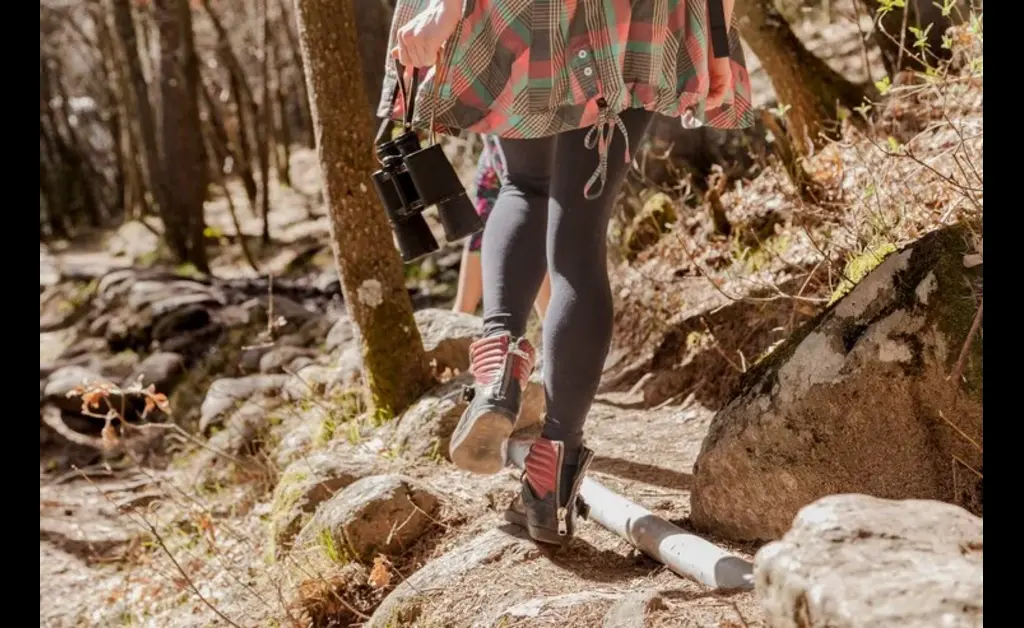Discovering the Best Women’s Hiking Shoes for Your Next Adventure
As an avid hiker and outdoor enthusiast, I know firsthand the importance of having the right footwear for your adventures. Whether you’re embarking on a leisurely nature walk or tackling challenging mountain trails, the right pair of women’s hiking shoes can make all the difference in your comfort, performance, and overall enjoyment. In this comprehensive guide, we’ll explore the top recommendations for women’s hiking shoes, considering factors such as comfort, durability, traction, and style.
Why Choose the Right Women’s Hiking Shoes?
Proper footwear is crucial when it comes to hiking. Ill-fitting or unsuitable shoes can lead to blisters, ankle injuries, and unnecessary discomfort, which can quickly turn your outdoor adventure into a miserable experience. On the other hand, investing in the right women’s hiking shoes can provide numerous benefits:
- Prevent Injuries and Discomfort: Well-designed hiking shoes offer ample cushioning, support, and stability, reducing the risk of sprains, blisters, and foot fatigue. This allows you to hike longer distances without compromising your safety or enjoyment.
- Enhance Performance and Endurance: Lightweight and breathable hiking shoes can boost your overall performance by reducing the strain on your legs and feet. This translates to increased endurance, allowing you to tackle more challenging terrain and longer hikes.
- Provide Stability on Various Terrains: From rocky paths to muddy trails, the right women’s hiking shoes offer superior traction and grip, ensuring you maintain your footing and stability on diverse outdoor surfaces.
- Improve Confidence and Enjoyment: When you know you have the right footwear for the task, you can focus on enjoying the scenery and the hiking experience itself, rather than worrying about foot discomfort or potential injuries.
Key Features to Look for in Women’s Hiking Shoes
Not all hiking shoes are created equal, and it’s essential to understand the key features that make a pair suitable for your specific needs. Here are some crucial factors to consider:
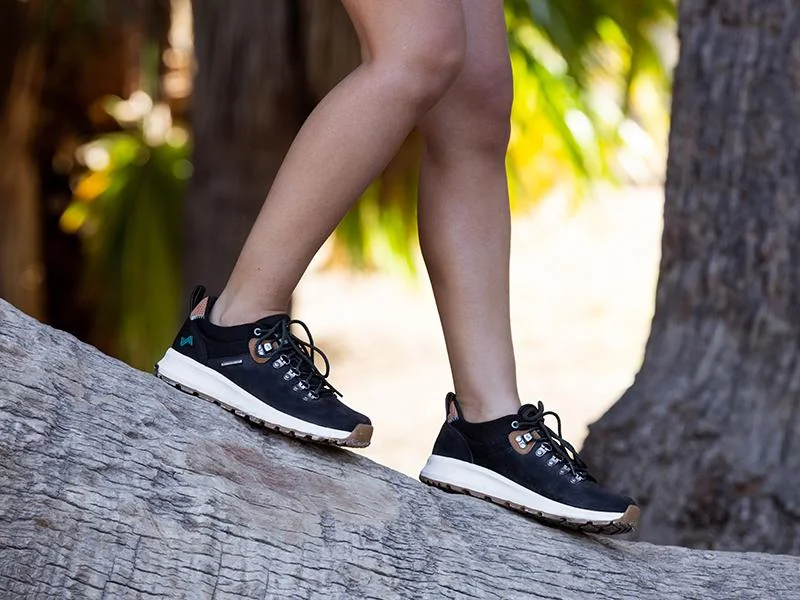
- Cushioning and Support: Look for shoes with ample cushioning in the mid sole and heel area to absorb shock and reduce fatigue. Arch support and a sturdy sole are also essential for maintaining proper foot alignment and stability.
- Waterproofing and Breath-ability: Depending on the terrain and weather conditions you plan to encounter, waterproof or water-resistant uppers can keep your feet dry, while breathable materials prevent excessive sweating and discomfort.
- Traction and Grip: A robust out sole with deep lugs or a sticky rubber compound can provide excellent traction on various surfaces, ensuring you maintain a secure foothold even on slippery or uneven terrain.
- Fit and Sizing: Women’s feet often differ from men’s in terms of shape and size, so it’s crucial to choose hiking shoes specifically designed for the female foot. Proper fit is essential for comfort and blister prevention, so make sure to try on different sizes and brands to find the perfect fit.
- Lightweight and Durable Materials: Look for hiking shoes constructed with lightweight yet durable materials, such as breathable mesh uppers and reinforced toe caps. This combination ensures long-lasting performance without weighing you down.
Top Women’s Hiking Shoe Recommendations for 2024
After extensive research and personal experience, here are some of the top women’s hiking shoe recommendations for 2024:
- Salomon X Ultra 4 GTX
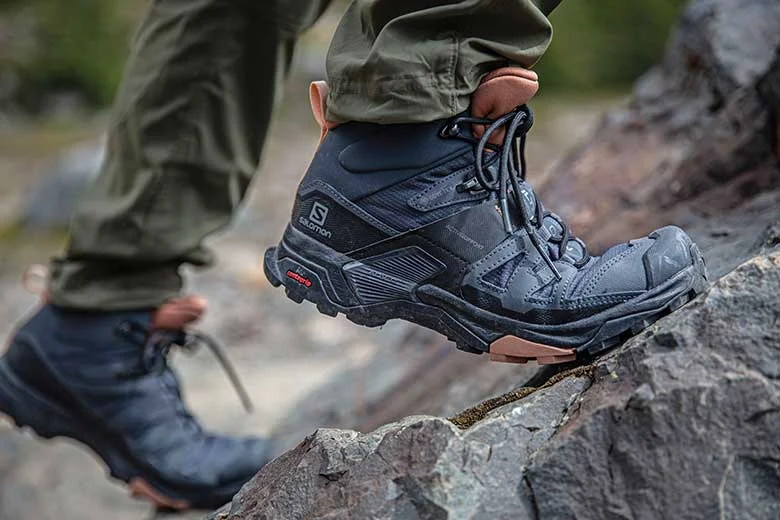
- Waterproof Gore-Tex membrane
- Aggressive lugs for excellent traction
- Comfortable and supportive mid sole
- Ideal for day hikes and moderate hiking trails
- Merrell Moab 3 Ventilator
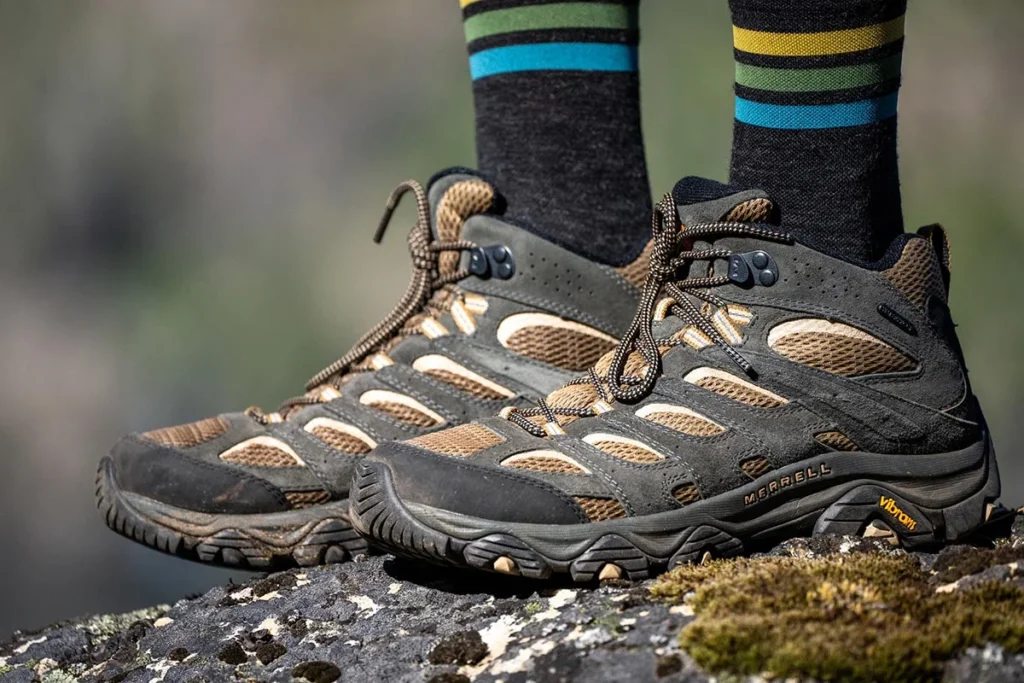
- Breathable mesh upper with reinforced toe cap
- Vibram out sole for reliable grip
- Contoured foot-bed for added comfort
- Suitable for various terrains, from trails to light scrambling
- Keen Targhee III Waterproof
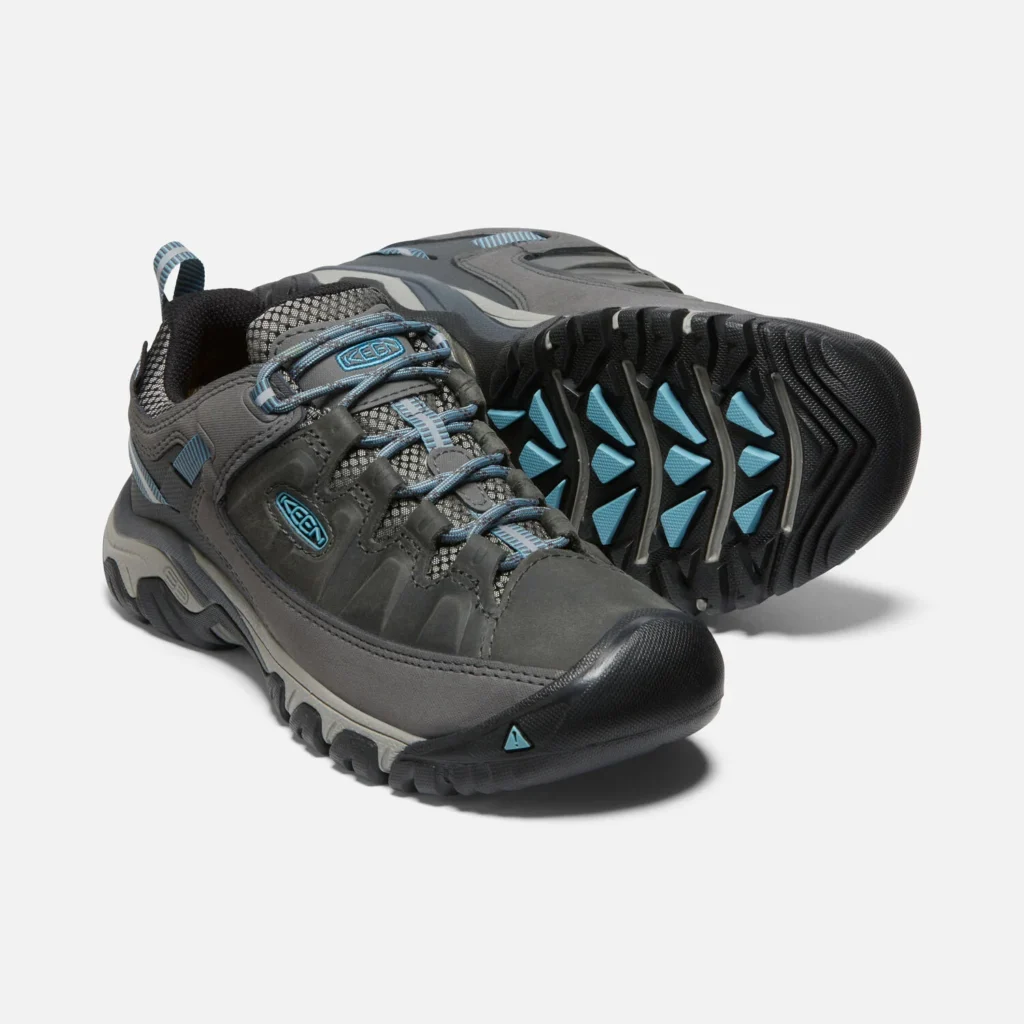
- Waterproof nubuck leather upper
- Dual-density EVA foot-bed for cushioning
- Sturdy out-sole with multi-directional lugs
- Ideal for rugged hiking and backpacking trips
- Oboz Sawtooth II Low
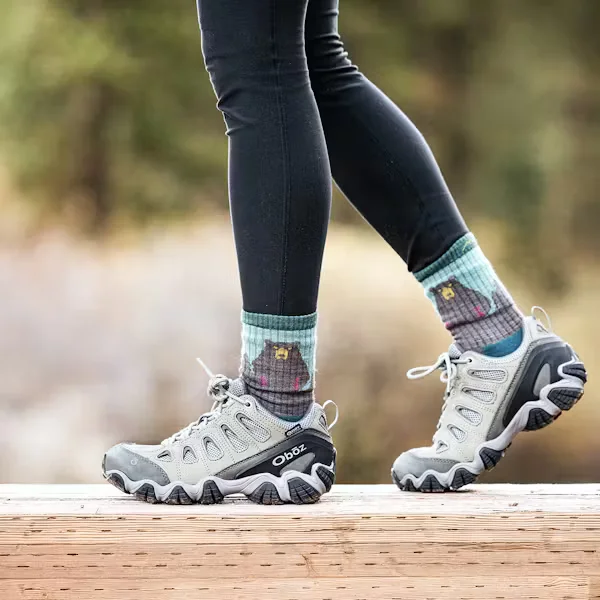
- Breathable and waterproof membrane
- Dual-density EVA mid sole for shock absorption
- Sturdy toe cap and heel counter
- Suitable for day hikes and lightweight backpacking
- Lowa Renegade GTX Mid
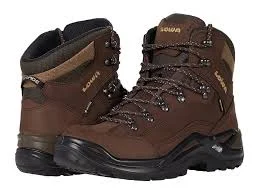
- Gore-Tex waterproof lining
- Nubuck leather upper for durability
- Vibram out-sole with aggressive lugs
- Ideal for demanding hikes and rough terrain
For each recommendation, I’ll provide a detailed product description, highlighting the pros, cons, and best uses, ensuring you have all the information you need to make an informed decision.
How to Choose the Right Women’s Hiking Shoes
With so many options available, selecting the perfect pair of women’s hiking shoes can be a daunting task. Here are some tips to help you navigate the process:
- Consider Your Hiking Terrain and Conditions: The type of terrain and weather conditions you’ll be encountering will play a significant role in determining the features you need. For instance, waterproof shoes are essential for wet or muddy trails, while breathable options are better suited for hot and dry conditions.
- Determine Your Foot Shape and Size: Women’s feet can vary significantly in terms of shape and size. Some brands may fit your foot better than others, so it’s crucial to try on different options and assess the fit. Pay attention to the toe box, heel cup, and overall comfort.
- Try on Different Shoes and Assess the Fit: Don’t rely solely on online reviews or descriptions. Visit a reputable outdoor retailer and try on various hiking shoe models. Walk around the store, and pay attention to any pressure points or areas of discomfort. A proper fit should feel snug but not restrictive, with enough room for your toes to wiggle.
- Break in New Hiking Shoes Before a Big Hike: Even the most comfortable hiking shoes may require a break-in period. Wear your new shoes around the house or on short walks before embarking on a longer hike. This will help mold the shoes to your feet and prevent blisters or discomfort.
Caring for Your Women’s Hiking Shoes
To ensure your hiking shoes last for many adventures, proper care and maintenance are essential. Here are some tips to keep your shoes in top condition:
- Proper Cleaning and Maintenance: After each hike, remove any dirt, mud, or debris from your shoes. Use a soft-bristled brush and mild soap and water to gently clean the uppers and out-soles. Allow them to air dry completely before storing.
- Waterproofing and Conditioning: If your hiking shoes feature waterproof membranes or leather uppers, consider using a waterproofing or conditioning treatment periodically. This will help maintain the shoes’ water resistance and prevent the materials from drying out and cracking.
- Storing Hiking Shoes Correctly: When not in use, store your hiking shoes in a cool, dry place, away from direct sunlight or heat sources. Stuff them with newspaper or shoe trees to help maintain their shape and prevent odors.
- When to Replace Worn-Out Shoes: Even with proper care, hiking shoes will eventually wear out. Watch for signs of excessive sole wear, compressed mid-soles, or deteriorating uppers. Replacing your shoes when they’ve reached the end of their lifespan can prevent injuries and ensure optimal performance on your next adventure.
People Also Ask:
What’s the difference between hiking shoes and hiking boots?
Hiking shoes are typically lighter and more flexible than hiking boots, making them better suited for day hikes or shorter backpacking trips on well-maintained trails. Hiking boots, on the other hand, offer more ankle support and are designed for rougher terrain, heavier loads, and extended backpacking trips.
How do I prevent blisters when hiking?
Proper fit is crucial for blister prevention. Ensure your hiking shoes have enough room in the toe box and aren’t too tight or loose. Break in new shoes gradually, and consider wearing moisture-wicking socks to keep your feet dry.
Should I size up or down for hiking shoes?
It’s generally recommended to go with your true shoe size or slightly larger for hiking shoes. This allows for foot swelling during long hikes and ensures enough wiggle room for your toes.
Are trail running shoes suitable for hiking?
While trail running shoes can be suitable for light hiking on well-maintained trails, they may lack the necessary support, traction, and durability for more demanding hikes or rough terrain. Dedicated hiking shoes are typically a better choice for most hiking activities.
How often should I replace my hiking shoes?
The lifespan of hiking shoes depends on various factors, such as frequency of use, terrain, and care. As a general guideline, consider replacing your hiking shoes every 300-500 miles or sooner if you notice significant wear or loss of traction or support.
Conclusion
Finding the best women’s hiking shoes is essential for a comfortable, enjoyable, and safe outdoor experience. By considering factors such as comfort, durability, traction, and fit, you can ensure your feet are well-protected and supported on every adventure.
Remember, the “best” hiking shoes are the ones that meet your specific needs and preferences. Don’t be afraid to try on different options and seek advice from experienced hikers or outdoor retailers. With the right pair of women’s hiking shoes, you’ll be ready to tackle any trail with confidence and enjoy the beauty of nature to the fullest.
So, what are you waiting for? Explore the top recommendations, find the perfect pair for your next hiking adventure, and embark on new outdoor experiences with the utmost comfort and confidence. Happy trails!
